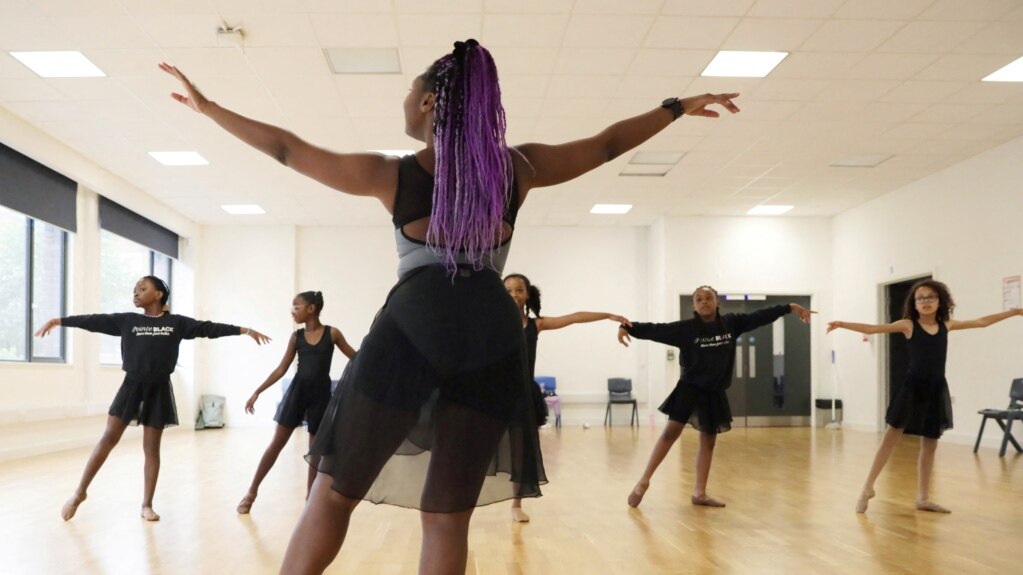It was a criticism about her Afro-braided hair that led Ruth Essel to create what she calls a safe space for Black dancers.
The founder of Pointe Black Ballet School in London said when she was a child, teachers and others all but punished her for not following the traditional ballerina way.
“I’ll never forget my first time about to dance on a West End stage,” said Essel. That was the time the 10-year-old wore her hair braided at dance practice. Her mother had spent her last $120 to get her hair done.
Her happiness disappeared when her teacher pointed at her in an almost all-white group of dancers. The teacher told her to take out her braids because it looked like “a mess.”
That was just one of several times Essel was made to feel bad about being different. “These are all things that happened before I was 16 years old, and I didn’t know any better,“ she said.
These difficulties led Essel to establish Pointe Black in 2020 at the age of 26.
“I wanted there to be a Black environment. I wanted there to be people who looked like me. I wanted there to be a teacher that looked like me,” she said.
She said it felt like she was given power when she could finally wear black clothes and shoes rather than the traditional pink color for ballerinas, “because it was closer to my color.”
Ballet has expanded across the world with famous ballet dancers from Asia, South America, and Cuba. But many still think of ballet dancers as light skinned. And classical ballet companies try to have a similar look for dancers in classical works like Swan Lake. That makes it harder for dancers of color.
Some 2.2 percent of dancers at the top four ballet companies in Britain are of Black ancestry. That percentage is in line with the country’s Black population at 3 percent, said Sandie Bourn of Britain’s Society for Dance Research in 2017.
A spokesperson noted that keeping diversity is important to everyone at The Royal Academy of Dance, saying “Dance is for everybody.”
But Essel wants to speed up change by introducing new ideas. She said her shows use African dances and music. And dancers wear different hairstyles, including twists, rolls and afros. She added, “… it’s really just about celebrating the person no matter where they come from.”
Maya Beale-Springe is a 10-year-old student at Pointe Black and another ballet school. She enjoys exploring different kinds, or types, of ballet.
“I get to experience different types of ballet, different music,” she said after a perfect practice for an upcoming show.
Essel teaches all the classes in her school. She said, “Everything about my school is what my younger self would have wanted.”
I’m Jill Robbins.

